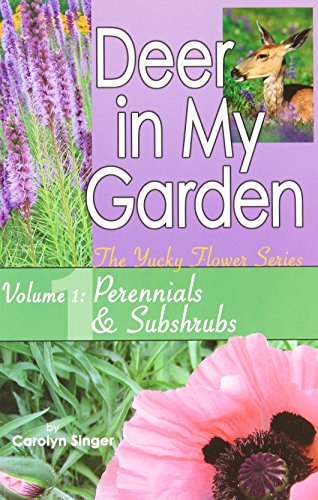How can I keep deer out of my garden? Something is eating my plants, and I think it’s deer. Do they like dahlias? Those are my favorite, and they seem to be especially hard hit. They don’t seem to like it when we water, so maybe we could do something with that?
Deer are very hard to repel. Information about managing deer around your home and garden is available at the Washington Department of Fish & Wildlife site, Living with Wildlife. (There are no guaranteed or complete repellents. As the link above mentions, some of the repellents may be toxic to plants, and may not be effective for very long. Furthermore, some of the predator urine repellents may not be humanely produced.)
First, you should identify which plants are being eaten; rodents and rabbits make a clean cut, while deer leave a jagged edge. And, of course, the browse marks are higher up on the plants if deer are the culprits. Fortunately, most native plants can survive some browsing. Unfortunately, deer do eat dahlias.
Once you determine which plants the deer is eating, you can often protect just those plants with a 4-6 foot circular fence just around the base of the plant. If you are trying to protect a small vegetable garden, you might be able to fence and cover it (suspending netting or chicken wire from the tops of the fence posts) as well. Fencing material can be made of woven wire or rigid polypropylene mesh.
You might consider motion-sensitive sprinklers, lights, or a radio–you did say that water scared off the deer. Some people have used blinking lights with success, strung so that they cast many shadows.
Some home remedies will work some of the time, though none work all of
the time. And, they all have to be replenished after a good rain or
watering. Here are some anecdotal examples of things that have worked (taken from
Washington Department of Fish & Wildlife biologist Russell Link’s book, Landscaping for Wildlife in the Pacific Northwest, 1999):
- Keeping dogs near the plants (for instance, installing their run near the garden).
- Human hair, strong-smelling soap, or
blood meal placed in stockings or cheesecloth bags and hung near the
plants. - Several old eggs blended in a gallon of water and placed in vented
containers, hanging near the plants.
The Washington Department of Fish & Wildlife’s Living with Wildlife website includes Link’s list of plants that are at least somewhat
deer-resistant. There are lists from Oregon State University and the King County Native Plant Guide, too.
While you may have to put up with some damage, I hope the ideas above will give you some places to start.
 Grass Valley, California is on the outer rim of our region, but the resident gardening columnist Carolyn Singer is worth knowing about, especially for gardeners in the foothills of the Cascades. She is very experienced with the ravages of deer, and address this concern in two books. “Deer in My Garden” (2006), was largely written while the author spent the summer of 2005 in Seattle and focuses on perennials and subshrubs. “Deer in My Garden: Volume 2” (2008) considers the impact on groundcovers and garden edge plants.
Grass Valley, California is on the outer rim of our region, but the resident gardening columnist Carolyn Singer is worth knowing about, especially for gardeners in the foothills of the Cascades. She is very experienced with the ravages of deer, and address this concern in two books. “Deer in My Garden” (2006), was largely written while the author spent the summer of 2005 in Seattle and focuses on perennials and subshrubs. “Deer in My Garden: Volume 2” (2008) considers the impact on groundcovers and garden edge plants. Grass Valley, California is on the outer rim of our region, but the resident gardening columnist Carolyn Singer is worth knowing about, especially for gardeners in the foothills of the Cascades. She is very experienced with the ravages of deer, and address this concern in two books. “Deer in My Garden” (2006), was largely written while the author spent the summer of 2005 in Seattle and focuses on perennials and subshrubs. “Deer in My Garden: Volume 2” (2008) considers the impact on groundcovers and garden edge plants.
Grass Valley, California is on the outer rim of our region, but the resident gardening columnist Carolyn Singer is worth knowing about, especially for gardeners in the foothills of the Cascades. She is very experienced with the ravages of deer, and address this concern in two books. “Deer in My Garden” (2006), was largely written while the author spent the summer of 2005 in Seattle and focuses on perennials and subshrubs. “Deer in My Garden: Volume 2” (2008) considers the impact on groundcovers and garden edge plants.